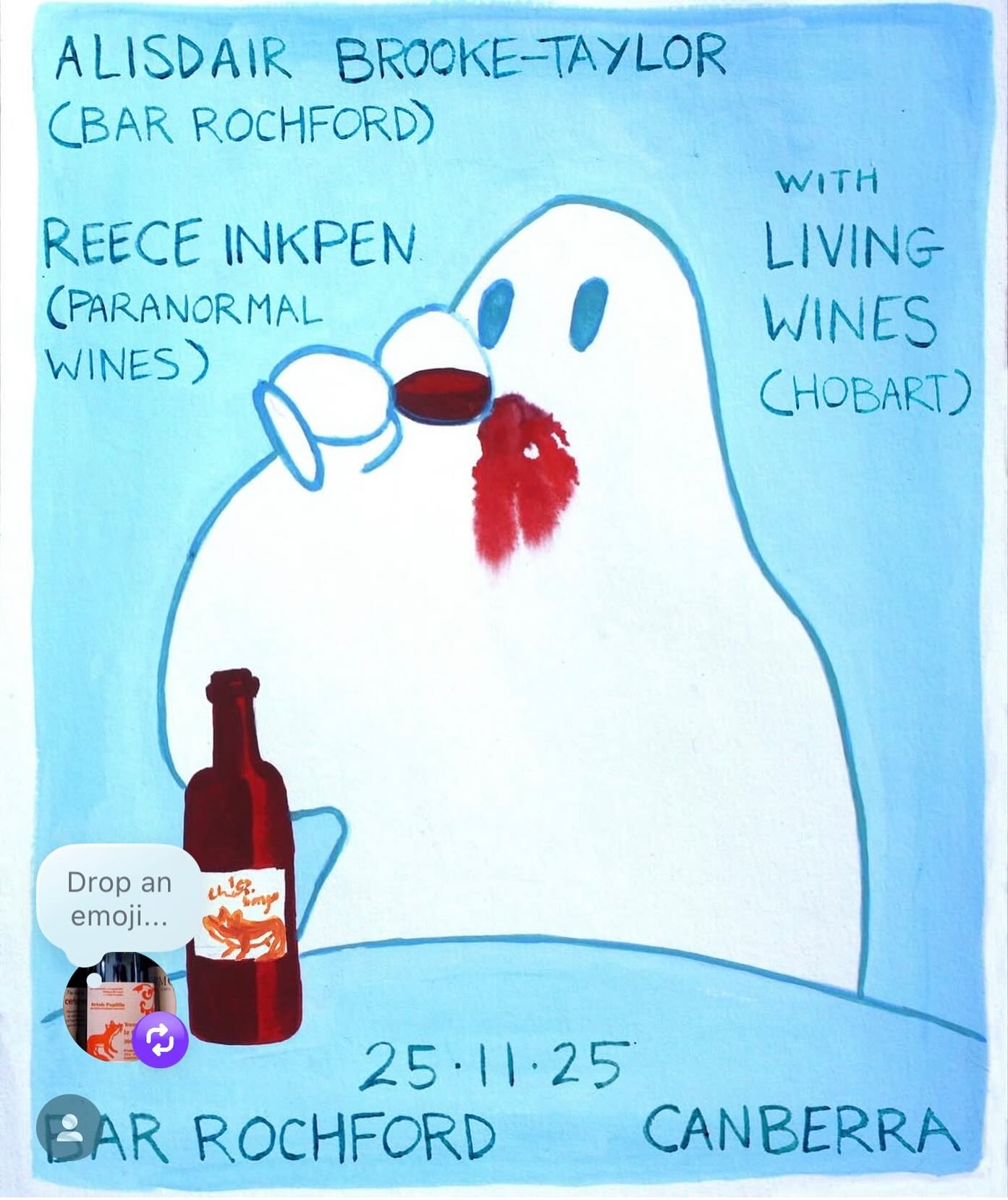Mito and her wines
It has been a long time since we have had any of Mito’s wines, which are the rarest of all the wines we import. Prior to covid we would organise to have our rental car registered with French Customs so we could collect our tiny annual allocation and deliver it to Hillebrand, ready for shipping with other wines. We expect that the staff’s bemusement as our little car lined up next to the semi-trailers at Hillebrand’s Beaune loading bays will be one of our most enduring and amusing memories of this life as Living Wines. The final wine we received, which arrived just before Australia’s borders shut, was La Vague, from the 2017 vintage.
Late in 2019 Mito offered us Flow, from the 2018 vintage, but we were not able to get to France to collect it and, unsurprisingly, in all the uncertainty of those early years of the pandemic, we think she sold it all in Europe. (We drank a bottle with Mito recently during a picnic by the river in Montaigut-le-Blanc, the village where she lives, and it was truly a magic moment.)
When we finally visited France post-covid in 2022 and again in 2024 we contacted Mito but she did not have any wine. We assumed that meant she had decided not to sell to Australia any more but in fact it literally meant she had not released any more wine since Flow.
Late last year, most unexpectedly, Mito contacted us to ask us if we would like some wine from three vintages. One was Prisme, a second cuvée from 2018. This is the first time we are aware of that she had made two wines in one year – we remember visiting her in April 2019 and being shocked to see so much wine (three full barrels)! She also offered us the wine she made in 2019 (Résonance) and 2020 (Kansha). The prices were enough to make us think twice, having quadrupled since the last time we had any wine from her, when they were already expensive.
But we threw caution to the wind and decided to take 12 bottles of each cuvée plus 36 bottles of an apple and quince cider (although as we subsequently discovered, according to Australian import regulations, it is not a cider because a cider can apparently officially only contain apple or pear juice).
A few months later, while the shipment was still being sorted out she also released Traversée, the wine she made from the 2022 vintage so, we decided to add that as well. Each bottle, while it might have been helping to break any semblance of a budget, was reducing the cost per bottle of sending a truck to collect such a small number of bottles to one of the more isolated regions we deal with. And now, after a few more challenges, they are finally here – four cuvées of wine and the cider.
Entranced by the wines of Pierre Beauger, Mito, who is Japanese, travelled between France, where she first became fascinated by wine, and Japan for nearly 10 years before eventually settling in Montaigut-le-Blanc within the iconic Puy-de-Dôme region, in the Auvergne, the same village where Beauger lives. By then she had also worked in other parts of France with other iconic natural winemakers, including Giles Azonni. We think the first wine she made under her own name and the first we drank, was from the 2011 vintage, at Vivant in Paris, then owned by Pierre Jancou.
It was impossible not to be entranced by her expressive, perfumed but so ethereally-light Gamays. We pestered her for several years before she finally sold us 6 bottles of Vespertine, the wine she made in 2014. That was our first delivery to Hillebrand, an allocation so tiny we could have brought it home in suitcases were it not for the complications of carrying it around France for a few weeks in warm weather.
Mito has had vines in several locations in the region (we were especially blown away a few years ago when we she took us to some steep terraces of Pinot Blanc in Courgoul, another story for another time), but she now farms two small parcels, which are almost entirely Gamay d’Auvergne, with a few vines of unknown, ancient varieties.
The parcel she is standing in in the photo below, where you can just see the vines, which are surrounded by grasses drying off in the warmth of July, is in the commune of Ludesse and had been abandoned before she acquired it in 2011. It is .76 ares (less than 1 hectare) and a mix of very old (70 years plus) and younger (50 year old) vines. The soil is clay, sand and limestone but not volcanic. The other, in the commune of Vic-le-Comte, still in the Puy-de-Dôme but further east, has volcanic basalt soil.

She makes no harsh chemical treatments, including no sulphur, to which she has an allergy, which means among other things mildew is always a risk. In spring she makes some biodynamic teas and treatments and cuts most, but not all of the grass.
That’s about it apart from the vibrations she creates by occasionally walking through the vineyard hitting this beautiful metal bowl with a soft gong. Feet are the only equipment which touch the ground. She does not have a tractor or other heavy equipment. She has the softest of impacts on her soil. At the top of the vineyard, where the soil is more acidic, there is a protective forest (see final photo). Her main concern though, apart from birds and wild animals, is the field across the road which you can see in the next photo, which is managed using conventional agriculture.

Her winemaking is very low impact too, in a tiny, unmarked cellar which was once used for aging Roquefort cheeses, one of about 140 historic unmarked cellars nearby, most of which are no longer in use.


Grapes are macerated for approximately one month, the juice is pressed and then the wine is usually aged for about 9 months in barriques. The exception is Traversée, the 2022 vintage, which spent well over two years in barrel. The barrels are not new so the wood is not noticeable even in these relatively young wines.
Her wines are bottled without racking using gravity then sealed with crown seals. There are, of course, no additions. The photo below, from the vast three-barrel 2018 vintage, shows the barrels raised on pallets to facilitate the bottling.

The four wines we have, all of which are made in the way described above, are listed below. They are all elegant, expressive and with a remarkable ability to feel ethereally light but still exhibit structure and length with enough tannins to suggest that, while it would not be infanticide to drink them now they will offer even more with further age.
They are made with Gamay but somehow, apart from Résonance, which definitely exhibits some of the spiciness we associate with wines from the Auvergne, albeit tempered, because of its elegance, it felt more like we were drinking a wine from Burgundy than the Auvergne. The say pets resemble their owners. We feel that Mito’s wines resemble her. They have her finesse and grace but also strength and structure, which it is easy to relate to her own tenacity to be able to coax such beautiful wines from such unlikely terrain.
Mito Inoue Prisme 2018
This wine is from Ludesse and is a cuvée made from the younger vines (which are approximately 50 years old) at the top of the vineyard.
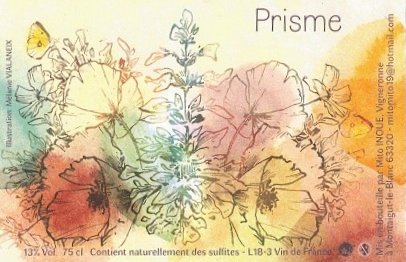
You can see the very top, surrounded by a small forest, in the photo below.

(Flow, the other wine from the 2018 vintage, which she released earlier, was made with grapes sourced from the rest of the Ludesse plot and Vic-le-Comte.)
The whole bunches were macerated for approximately one month, then the juice was transferred into an old barrel for 9 months or more prior to bottling. Mito, in a recent communication with us said ‘my wines begin after 5 years of bottling’. After a recent tasting of some of her older wines, we can but agree!
SOLD OUT – SORRY!
Mito Inoue Résonance 2019
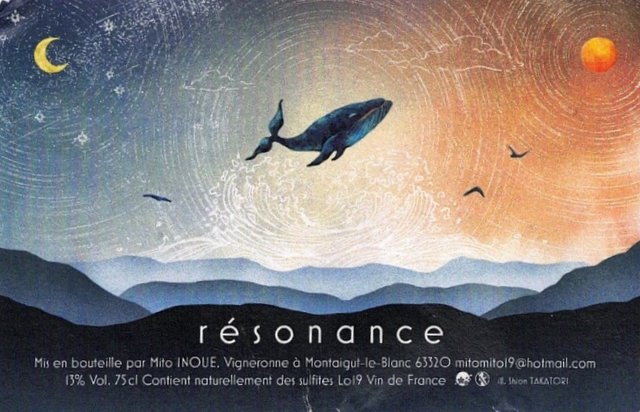
Résonance is from Ludesse and Vic-le-Comte.
The whole bunches were macerated for approximately one month, then the juice was transferred into an old barrel for 9 months or more prior to bottling. Mito, in a recent communication with us said ‘my wines begin after 5 years of bottling’. After a recent tasting of some of her older wines, we can but agree!
LUC $927.00 a bottle
Mito Inoue Kansha 2020

Kansha is from Ludesse and Vic-le-Comte. Mito thinks, of these four wines, Kansha is the best to drink now.
The whole bunches were macerated for approximately one month, then the juice was transferred into an old barrel for 9 months or more prior to bottling. Mito, in a recent communication with us said ‘my wines begin after 5 years of bottling’. And this is the exact age of the Kansha in 2025. When we tasted it in September 2025 it was delicious!
LUC $927.00 a bottle
Mito Inoue Traversée 2022
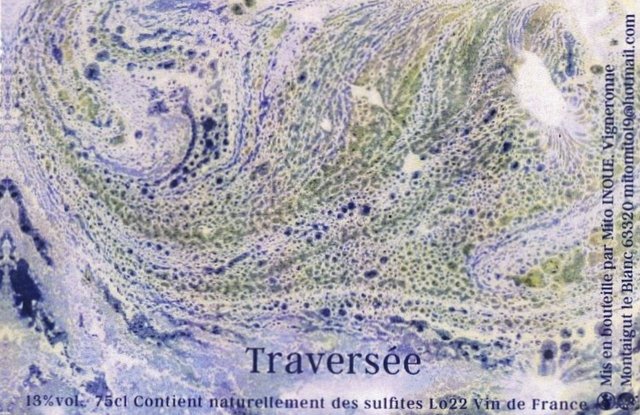
Traversée is from Ludesse and Vic-le-Comte.
The whole bunches were macerated for approximately one month, then the juice was transferred into an old barrel for 9 months or more prior to bottling. Mito, in a recent communication with us said ‘my wines begin after 5 years of bottling’. This cuvee should be ready to drink in 2027.
LUC $827.00 a bottle
Mito Inoue Twinkoing Cidre aux Coings 2018
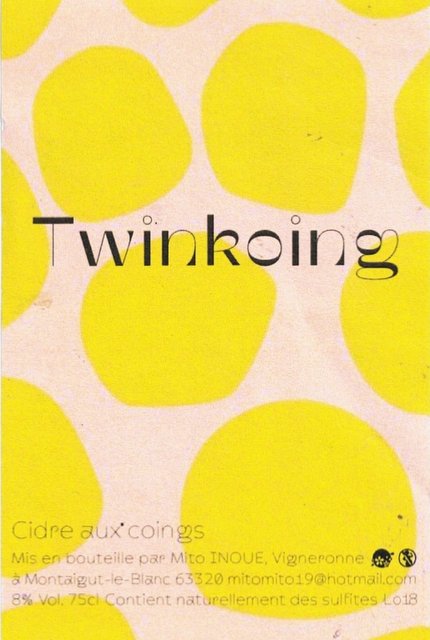
Mito began making cider because of the uncertainty of making wine. In the centre of France, the Auvergne is always at risk of frosts and in many years, if she was not affected by frost, she has subsequently lost most of her potential harvest to summer hailstorms. Cider is her plan B.
Twinkoing is 98% apple juice and 2% quince juice, sourced from an organic grower in La Roche-Blanche, just south of Clermont-Ferrand. She used the same press to crush and press the fruit as she uses for her wine. The cider, like her wines, is bottled without any additions.
Despite the quince being a tiny proportion of the cider, its compelling, highly perfumed aromas dominate both the nose and the palate. It’s a joyful drink, a lovely accompaniment to apple or quince-based desserts or a refreshing aperitif. Its price is, of course, not so joyful. Perhaps this is the most expensive cider you can buy in Australia.
However, according to the Australian government it is not actually a cider because a cider must contain 100% apple or pear juice. Because of the classification we paid excise duty rather than WET tax. Fortunately, because it was only 8% alcohol, the impact of that piece of bureaucracy on the price was positive.
RRP: $254
Mito lives in the Auvergne which is where the remote, but wonderful, Chassignolles hotel is situated. If you are heading for France and would like a couple of days of relaxation, great food and lots of natural wines, you can find out more about one of our favourite places in France via their Website.
We will be writing some more about Mito in the future in our newsletter. You can check by looking at our Newsletter page here.

